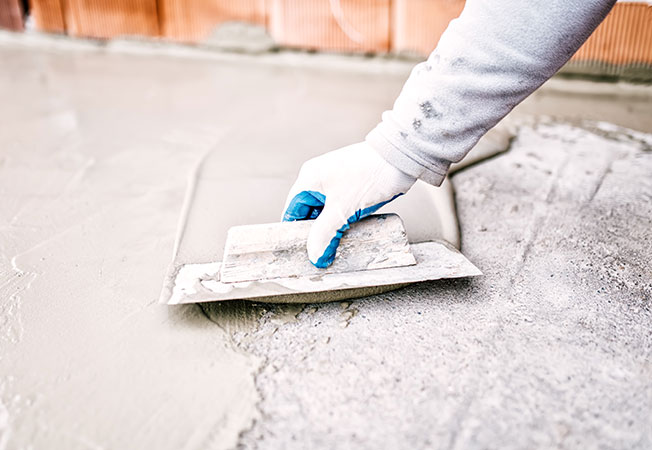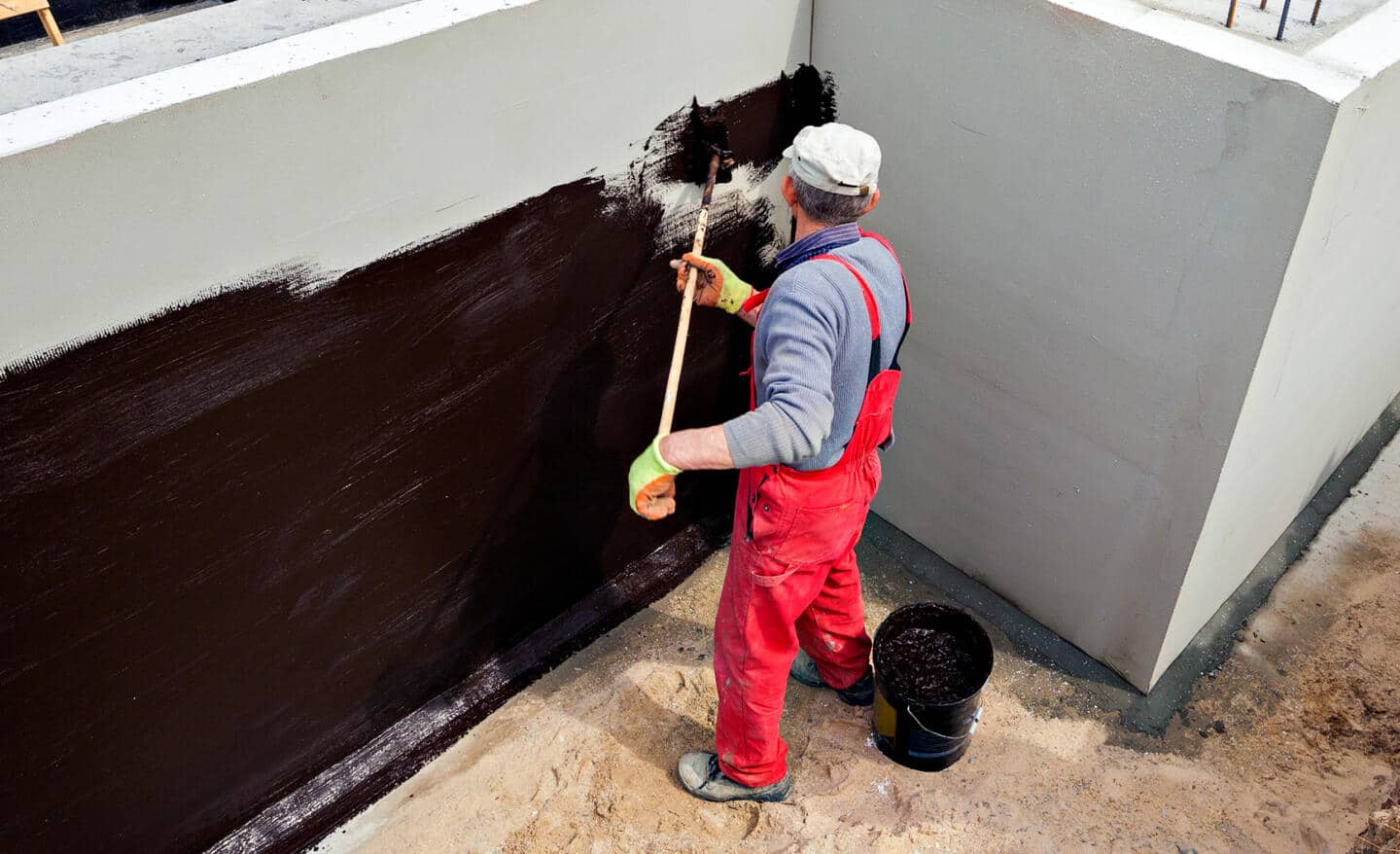Basement waterproofing Omaha: Proven Methods for Maximum Protection
Wiki Article
How Waterproofing Works: A Thorough Appearance at Techniques and Technologies
Waterproofing is vital for securing frameworks from moisture-related damages. It entails numerous techniques and technologies that create obstacles against water breach. Standard techniques, such as compacted clay, coexist with contemporary advancements like liquid-applied membrane layers. Recognizing the nuances of these methods is vital for effective application. Nevertheless, the effectiveness of any kind of waterproofing option hinges not just on the strategies used however additionally on continuous upkeep and inspection. What are the vital elements that affect long-term performance?Understanding the Fundamentals of Waterproofing
Waterproofing is a crucial process that safeguards structures from water breach, which can result in significant damage with time. This technique involves the application of different materials and techniques developed to create a barrier versus moisture. The key goal is to stop water from permeating surfaces, which can cause damage, mold and mildew growth, and architectural instability.Various variables affect the selection of waterproofing approach, including the kind of structure, its area, and ecological problems. Understanding the physics of water activity and the buildings of various products is essential in selecting an efficient waterproofing solution.Effective waterproofing not only safeguards buildings but also boosts their long life and stability. Typically, it is integrated right into the layout phase of construction to ensure complete security. As understanding of water-related issues grows, the importance of recognizing waterproofing basics ends up being progressively clear to architects, contractors, and property proprietors alike.Traditional Waterproofing Methods
Traditional waterproofing approaches have been utilized for centuries, depending on time-tested methods and products to guard frameworks from water damages. One of the oldest methods entails the usage of clay, which, when compressed, produces a natural barrier against moisture. Additionally, bitumen, a sticky, black product originated from oil, has been utilized for its water-resistant residential properties, typically related to roofs and foundations.Another method involves the application of lime-based plasters, which provide a breathable layer that allows moisture to escape while avoiding water access. Thatch roofing, a traditional method still seen in some cultures, supplies outstanding waterproofing as a result of its firmly loaded straw layers.Moreover, making use of stone and block has projected, as these materials are inherently resistant to water when appropriately mounted. On the whole, typical waterproofing methods highlight the relevance of selecting appropriate materials and building and construction practices to boost toughness versus water invasion.Modern Waterproofing Technologies
Innovations in modern waterproofing innovations have transformed the means frameworks are safeguarded from water damage. Innovative approaches such as liquid-applied membrane layers and innovative sealers have enhanced the effectiveness and versatility of waterproofing services. These modern technologies permit smooth application, lowering the danger of leakages and making sure complete insurance coverage over complicated surfaces.Moreover, the assimilation of smart technologies, such as dampness sensors and automated monitoring systems, makes it possible for real-time analysis of waterproofing efficiency. This proactive technique facilitates prompt maintenance and decreases long-term repair service costs.Additionally, advancements in spray-applied layers offer quick application and outstanding bond, adapting to numerous substratums while providing durable defense. Strategies like polymer-modified systems further boost adaptability and durability, making them suitable for varied settings. Overall, contemporary waterproofing modern technologies not just reduce water intrusion but additionally add to the long life and sustainability of frameworks, noting a considerable change in the sector.Materials Utilized in Waterproofing
The efficiency of waterproofing solutions greatly counts on the materials made use of in their application. Different materials are utilized to produce obstacles versus water ingress, each with distinct properties suited for various settings. Frequently used products consist of membranes, coatings, and sealants.Liquid-applied membrane layers, usually made from polyurethane or acrylic, create a smooth barrier that adjusts to intricate surface areas. Sheet membranes, typically created from rubber or polycarbonate, offer sturdiness and are ideal for bigger areas. Additionally, cementitious waterproofing materials, composed of cementitious compounds, offer superb adhesion and flexibility.Sealants made from silicone or polyurethane are crucial for joints and joints, ensuring extensive security. Advanced products, such as geo-composite membranes, combine several functions, improving performance. Overall, the choice of waterproofing materials is important in accomplishing long-lasting and effective water resistance, customized to details task needs and ecological problems.
Typical Applications of Waterproofing
Waterproofing plays a crucial role in different industries, making sure the durability and stability of structures. Typical applications consist of property solutions that safeguard homes, industrial facilities that safeguards services, and commercial setups that call for robust protection versus moisture. Understanding these applications highlights the importance of waterproofing in maintaining both safety and functionality throughout various settings.Residential Waterproofing Solutions
Many home owners encounter difficulties with moisture breach, making efficient domestic waterproofing services vital. Numerous techniques exist to address this concern, consisting of exterior and interior waterproofing systems. Interior services commonly include the application of sealants and layers to basement wall surfaces, which assist stop water infiltration. Exterior methods commonly consist of the setup of water drainage systems and water-proof membrane layers that divert water away from the foundation.Additionally, house owners may take into consideration sump pumps to eliminate water accumulation and dehumidifiers to manage moisture degrees. Appropriate grading and making use of rain gutters likewise play an essential role in handling water flow around the home. By executing these approaches, home owners can considerably minimize the risk of water damages and mold growth, making certain a completely dry and secure living setting.
Business Infrastructure Defense
Effective waterproofing solutions play a vital duty in the defense of business framework. Foundation waterproofing Omaha. These methods are necessary for guarding buildings, car parking frameworks, and bridges from water damages, which can endanger structural integrity and bring about pricey repairs. Usual applications consist of the setup of membrane layers, coatings, and sealers that produce barriers versus moisture seepage. Locations such as basements, roofing systems, and exterior wall surfaces are frequently focused on to assure longevity and resilience. Additionally, waterproofing systems can boost energy performance by stopping water-related concerns that may lead to mold growth and damage. By implementing robust waterproofing actions, homeowner can protect their financial investments and keep functional efficiency, eventually adding to the total sustainability of business facilitiesIndustrial Applications Review
While different sectors face unique challenges, the need for dependable waterproofing solutions stays a constant in industrial applications. Industries such as production, building and construction, and power typically encounter environments where moisture direct exposure can jeopardize architectural stability and functional performance. In manufacturing centers, waterproofing is crucial for securing equipment and products from water damages. In construction, it safeguards structures and basements against groundwater seepage. The power market counts on waterproofing for the security of tools in hydroelectric plants and overseas structures. In addition, food processing markets use waterproofing to assure hygiene and conformity with safety standards. Overall, efficient waterproofing remedies are essential for enhancing durability, safety, and productivity throughout numerous industrial setups.
Maintenance and Long Life of Waterproofing Solutions
Although waterproofing services are made to provide long-lasting security against dampness intrusion, routine maintenance is important to guarantee their efficiency and durability - Water Solutions. Routine examinations play a significant duty in identifying potential problems such as splits, peeling, or indicators of water Foundation waterproofing Omaha damages. Resolving these troubles immediately can prevent further degeneration and expensive repairs.Additionally, cleaning the surface of waterproof locations assists get rid of dirt and particles that might endanger the stability of the waterproofing obstacle. It's additionally a good idea to reapply protective coverings or sealers as advised by producers to preserve ideal efficiency. Ecological factors, such as UV exposure and extreme weather, can influence the life expectancy of waterproofing products, making normal assessment importantFrequently Asked Inquiries
Can Waterproofing Be Applied in Cold Weather Condition?
The concern of using waterproofing in chilly weather condition raises concerns regarding adhesion and healing. Many items may not do at their finest in reduced temperature levels, demanding careful option and factor to consider of specific guidelines for efficient application.The Length Of Time Does Waterproofing Commonly Last?
The duration of waterproofing effectiveness differs based on materials and environmental aspects. Normally, it can last from 5 to 10 years, but routine upkeep and assessments are important to ensure peak performance and durability.Is Do It Yourself Waterproofing Effective and Safe?
The performance and safety and security of do it yourself waterproofing depend on numerous aspects, consisting of material high quality and application strategy. While some people accomplish adequate outcomes, others might encounter issues that endanger lasting defense and architectural honesty.What Are the Indicators of Failing Waterproofing?
Signs of failing waterproofing consist of noticeable water stains, peeling paint, mold growth, moldy odors, and wetness in wall surfaces or ceilings - Basement waterproofing Omaha. These signs suggest jeopardized barriers, demanding punctual inspection and possible remediation to stop more damagesExactly how Do I Choose the Right Waterproofing Contractor?

Report this wiki page